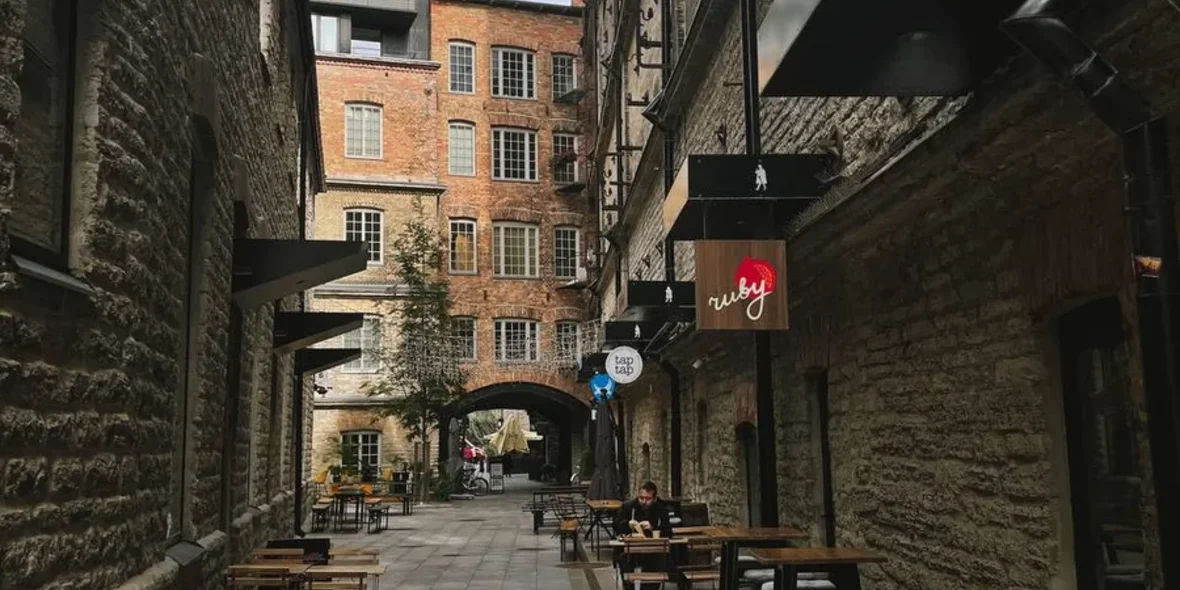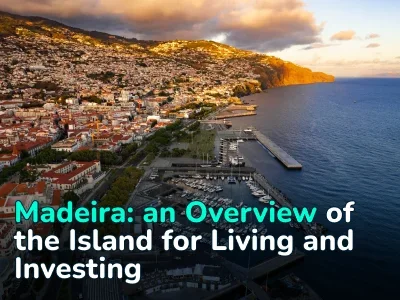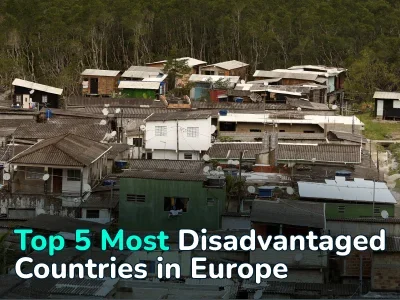
Life in Estonia: Experience of Relocating, Working and Adapting
“Here, almost everything can be done online” — these words accurately describe modern Estonia, about which Alexandra told us. She moved to Tallinn 3 years ago, and in this interview she shares her experience of adaptation, work, renting an apartment, and cultural leisure in the Estonian capital.
Estonia is very welcoming to learning the Estonian language.
Moving and Adaptation
— My name is Alexandra. I am 29 years old. I am a photographer and retoucher; I teach photography and retouching, do commercial, personal, couples, family, and content shootings for Instagram experts or for business.
I have many hobbies, especially sports ones. I do yoga, go boxing, sometimes to Pilates, I like snowboarding, and actively go to the gym. I also like to paint pictures using tutorials.
I have been living in Tallinn, Estonia, for three years now. I moved from Belarus with my husband for his job (he is a programmer). His company moved us, and from them we received a temporary residence permit in this country.
At the moment, we have broken up, but we are still formally married. Plus, I still live on documents from his work. My task is to get a divorce and get a different type of residence permit. We moved until Feb. 2022, and then it was not so difficult to do. Companies were very active in transporting people from Belarus and Russia, helping with documents. Now, of course, it is not so easy.


— The adaptation went well overall because many people in Estonia speak Russian, and you can use English. Because of the Russian language, it sometimes felt like you had never left. Also, Estonia was part of the Soviet Union, and there are many buildings here that are very similar to Soviet nine-story buildings, and sometimes you walk and forget yourself.
Plus, Estonia is very conducive to learning the Estonian language. There are free courses offered by the Integration Foundation (a local organization), and there is also the company Settle in Estonia, which also offers language learning at levels A1 and A2. The Integration Foundation can also teach higher levels of the language. There are many schools that provide training. There is a program for the unemployed: you can choose any school, and you are given 2500 euros to learn Estonian, if you justify the need for it.
I adapted quickly because I am a photographer. Immediately after arriving, I started writing to stylists, make-up artists and became friends with some of them — due to this, my circle began to grow, and my level of English improved.




Here, almost everything can be done online.
Pros and Cons of Living in Estonia
— Overall, I like everything about Estonia. Mostly, it concerns the environment and the people I found here.
I am also attracted by the fact that the country actively helps with adaptation through learning the Estonian language. I am currently taking a free course from the Integration Foundation in Estonian at level B1. Classes are held twice a week for 2 hours and 15 minutes. This is an online course. Initially, there were 25 people in the group; now there are 10–12 people left. The course began in February and will end in December.
If we talk about the downsides, then probably we can include high prices for products and services. They have grown, especially over the last three years. For example, a manicure has gone up in price from 20 to 35–50 euros. Milk costs about 80 cents, sour cream 1 euro, juice 2–3 euros, chocolate 2–3 euros. If earlier 20 euros could buy a full set of products for a week, now this amount will be enough for about two days. Although everything is subjective — it depends on what exactly you buy.
I really like the coziness of the city and the country. Only about 450 thousand people live in Tallinn, which is significantly less compared to Minsk, where there were two million. The city is very cozy, small, and for me, this is exactly the place where I feel comfortable. I was born in a village (the village of Borovka, about 170 kilometers from Minsk) and lived there until I was 17, so I got used to the fact that there are not many people around. That is why I feel very, very comfortable in Tallinn.
There is a cool old town here. Even if you have lived here for three years, you can come there and feel like a tourist — especially on weekends. Lots of people come, and you can go and enjoy the atmosphere. This is probably the most beautiful old town I have ever been to. The coziest and most comfortable. There are many cafés with their own history. You can take excursions where they tell you about the features of the old town, myths and legends — very interesting.
The wonderful Christmas market is coming soon. I can’t wait to immerse myself in this fairy tale again.


— English and even Russian are enough for life. Older people mostly speak Russian, the younger generation speaks English, less often Russian. There are many bilinguals — for example, families that moved during the Soviet Union. Their children can speak both Russian and Estonian. In any café, you can order in English or Russian without any problems.
About Estonians themselves, I can say that they seem closed, but in fact they are kind and wonderful people — you understand this when you are in their close circle. They may seem cold and are unlikely to enter into trusting relationships with people they don’t know well. But those I have encountered are very friendly, smile, and speak Russian nicely with an Estonian accent.
I try to communicate and order in Estonian. My level already allows me to buy something in a store or order food. I respect that we are in Estonia, and I would like to learn the state language.
Life and Digitalization
— It is very easy to arrange your daily life in Estonia, as Estonia is a country of digital technologies, where almost everything can be done remotely. A bank account is opened online; a SIM card can also be obtained online — it is sent to you at a parcel terminal, which you can pick up.
The medical system is also fully digitalized. My medical card is online. There is a special system with a password, by logging into which you can see all the extracts and prescriptions. In addition, there is an ID card linked to a residence permit. This card can serve as a discount card in some stores.
If you need to buy medicine, you just need to show your ID card, and all the necessary prescriptions are visible on it. You don’t need to carry a paper prescription with you — everything is stored online. You can contact the doctor by phone, and he will give you the necessary recommendations. Often, a personal visit is not required for colds. Prescriptions can be written remotely, although a personal visit is required for antibiotics.
I work as a photographer and retoucher remotely. It is very comfortable to work, and I mainly use Instagram for promotion, which is enough to form a client base.


It is not easy for a foreigner to find a job in Estonia.
Job Search and Salary
— The average salary in Estonia is about 1,392 euros. Personally, 1,500 euros a month is enough for me to pay for an apartment and all related expenses. You can live cheaper or more expensive — depending on your lifestyle and desire to travel.
It is not easy for a foreigner to find a job in Estonia. It is easiest in IT companies, where knowledge of Estonian is not always required. Many of my acquaintances have difficulties finding a job, especially without work experience. Some work in Russian companies or have been looking for a job for a long time.
Now I am also looking for additional work, as the income from photography is not enough. After the divorce, the financial situation became more complicated, so I am looking for a part-time job for stability. I really want to stay and live in Estonia.
I have an entrepreneurial account in the tax system — I pay 20% from each transaction. For example, from a shoot costing 170 euros, 34 euros go to tax. With an income of over 2000 euros, it becomes more profitable to open your own company with lower taxes.






Rental Housing and Leisure
— It has become easier to find housing now due to the decrease in migration flow. When we arrived three years ago, the competition was fierce, and apartments were snapped up very quickly. The quality of housing is very good. There are both Soviet and new houses. I have a small apartment in a new house, but it is very well-appointed, so it is quite spacious, light and comfortable.
I rent a place of about 30 square meters for 550 euros plus utilities. In summer, electricity costs 70 euros; in winter, it can reach 150 euros. Internet and mobile communications cost about 43 euros; the gym costs 43 euros.
Tallinn’s special feature is free public transport for residents with registration. However, they are planning to introduce a paid system in the near future.
The service in the establishments has also become better over the years that I have lived here. Again, many people have moved here, and competition in various areas has begun to grow, so I think this has played a role.


— Tallinn has a lot of activities: food and coffee festivals, light shows, themed events, Christmas fairs. There are many master classes and community groups. For example, my friend organized her own women’s community here with different activities. For example, we went to a nutritionist to cook healthy pumpkin soup. So here you can always go somewhere and spend your time in an interesting way.
Estonia is suitable for lovers of coziness, tranquility and nature. But you need to be prepared for a difficult climate — from November to April there are very few sunny days, strong winds. But the summer is simply wonderful — soft and pleasant.
The main thing is to be able to organize your leisure time and find positive moments even in cloudy weather.
Do you want to share your personal experience of relocating and living in another country? Email us at info@realting.com. We will be happy to tell your story.
Author
I am responsible for editorial work. I write expert interviews and guides.






















